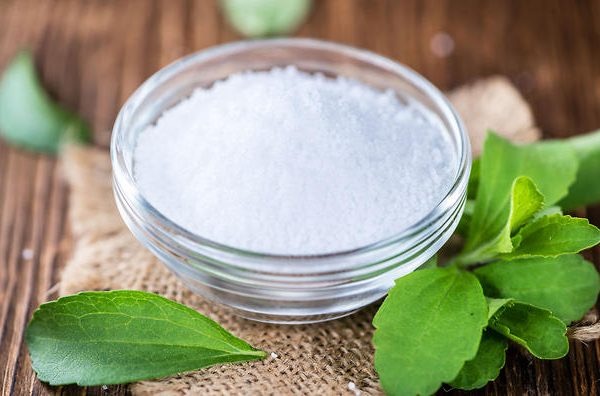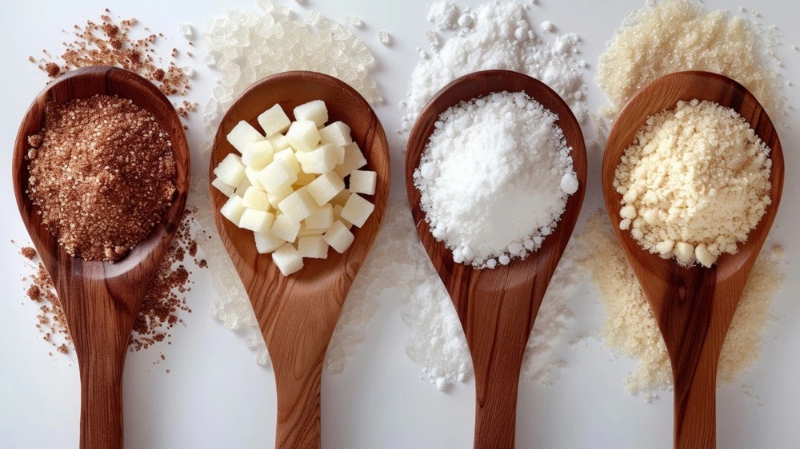Views: 222 Author: Sara Publish Time: 2025-10-18 Origin: Site








Content Menu
● Understanding Artificial Sweeteners
● Popular Safe Artificial Sweeteners
>> 1. Stevia
>> 2. Sucralose
>> 3. Acesulfame Potassium (Ace-K)
>> 4. Advantame
>> 5. Sugar Alcohols (Sorbitol, Xylitol, Erythritol)
● How Artificial Sweeteners Work
● Applications of Artificial Sweeteners in Food and Beverage
● Potential Health Effects and Safety
● Choosing the Right Sweetener for Your Needs
● FAQ
>> 1. What is an Acceptable Daily Intake (ADI) for sweeteners?
>> 2. Are artificial sweeteners safe for people with diabetes?
>> 3. Can children consume artificial sweeteners?
>> 4. Do artificial sweeteners cause weight gain?
>> 5. Are natural sweeteners safer than artificial ones?
Artificial sweeteners have become popular as alternatives to sugar, especially for those seeking to reduce calorie intake or manage blood sugar levels. As a company specializing in health solutions for food, beverage, and healthcare industries—including natural sweeteners and blended formulations—understanding the safety of artificial sweeteners is essential.
This article explores the safest artificial sweeteners, backed by scientific research and regulatory approvals, while integrating the keyword Sweeteners throughout to maintain relevance and flow.

Artificial sweeteners are compounds that provide the sweet taste of sugar with fewer or zero calories. They are used widely in diet beverages, sugar-free gum, baked goods, and health supplements. Common examples include aspartame, sucralose, saccharin, and newer compounds such as advantame.
Before artificial sweeteners can be used in food products, they undergo rigorous safety evaluations by government agencies such as the U.S. Food and Drug Administration (FDA). The FDA approves sweeteners like aspartame, sucralose, acesulfame potassium, saccharin, and natural sweeteners such as stevia and monk fruit extracts. Each sweetener is assigned an Acceptable Daily Intake (ADI), denoting the maximum amount considered safe per day based on body weight.
Stevia is a natural sweetener derived from the leaves of the *Stevia rebaudiana* plant. It has zero calories and a Glycemic Index (GI) of zero, making it excellent for blood sugar control. Stevia is FDA-approved as a sweetener and is noted for its safety in moderate amounts.
Known by the brand name Splenda, sucralose is about 600 times sweeter than sugar and is heat-stable, allowing its use in baking. Most sucralose passes through the body unchanged without being metabolized, limiting toxicity risk. It is widely regarded as safe by regulatory bodies.
Ace-K is about 200 times sweeter than sugar and often combined with other sweeteners to improve taste. It is heat stable but may have a slightly bitter aftertaste. Approved by the FDA, some studies suggest the need for more research on its long-term effects.
A newer sweetener, advantame is ultra-potent at 20,000 times sweeter than sugar. It is synthesized from aspartame and vanillin and approved for use in foods. Relatively little is known about its long-term health impact, though it requires extremely small amounts for sweetness.
Sugar alcohols provide sweetness with fewer calories than sugar and do not cause significant blood sugar spikes. They are not classified as additives by the FDA but are commonly used in sugar-free products. They may have laxative effects in excess.

Artificial sweeteners are categorized as high-intensity sweeteners because they are hundreds to thousands of times sweeter than table sugar. For example, sucralose is 600 times sweeter, and advantame is 20,000 times sweeter than sugar. This means only very small amounts are needed to achieve desired sweetness, enabling calorie reduction. Many artificial sweeteners are zero-calorie or nearly calorie-free.
Manufacturers often blend high-intensity sweeteners with bulking agents like maltodextrin or glucose to improve texture and ease of measurement. These blends are designed to replicate sugar's volume and function in baking and cooking, while pure sweeteners are often used in beverages and products where bulk is unnecessary.
Artificial sweeteners are widely used in products ranging from diet soda and sugar-free gum to baked goods and pharmaceuticals. Their heat stability varies:
- Sucralose is heat-stable and suitable for baking and cooking.
- Aspartame breaks down at high temperatures and is better suited for cold or low-heat products unless formulated into heat-stable blends.
- Acesulfame potassium is also heat stable, making it valuable for baked items.
The taste likeness to sugar varies. Sucralose and blends of aspartame with acesulfame potassium taste closest to sugar, while saccharin and ace-K have slight bitter or metallic aftertastes. Blends often mask undesirable notes and create a more balanced sweetness profile for beverages and foods.
Regulatory agencies such as the FDA, European Food Safety Authority (EFSA), and World Health Organization (WHO) consistently review scientific data on artificial sweeteners. To date, approved sweeteners have been deemed safe when consumed within ADI limits.
Studies have noted some concerns and ongoing research areas:
- People with phenylketonuria (PKU) must avoid aspartame due to phenylalanine content.
- High consumption of some sugar alcohols may lead to gastrointestinal discomfort.
- Some observational studies have raised questions about artificial sweeteners' effects on metabolism and gut microbiota, but no conclusive harmful association has been confirmed.
Despite myths, extensive research supports that artificial sweeteners do not cause cancer or significant adverse health outcomes in humans at approved levels.
When selecting sweeteners for product formulation or personal use, consider:
- Taste profile: Sucralose and stevia have favorable taste; blends can mask off-flavors.
- Heat stability: Needed for baking or cooking applications.
- Caloric impact: Most provide little or no calories.
- Health conditions: Avoid aspartame if you have PKU; consider gastrointestinal tolerance for sugar alcohols.
As a manufacturer providing OEM/ODM services for sweetener blends, understanding these factors allows you to tailor solutions for diverse client needs in food, beverage, and healthcare.
Artificial sweeteners are valuable tools to reduce sugar intake and calories while maintaining sweetness. Stevia, sucralose, acesulfame potassium, advantame, and sugar alcohols are among the safest and most widely used sweeteners approved by global health authorities. They serve diverse roles from tabletop sweetening to baked goods and beverages. Careful selection based on taste, stability, and health status optimizes benefits. Continued research ensures their safety profile remains well understood, reassuring both manufacturers and consumers of their safe use.

The ADI is the estimated maximum amount of a sweetener a person can safely consume daily without health risks. It is set by regulatory bodies based on extensive toxicity studies and is usually expressed in milligrams per kilogram of body weight.
Most artificial sweeteners do not raise blood glucose and are safe for people with diabetes. They offer a way to enjoy sweetness without impacting blood sugar control, although individual responses may vary.
Children under 2 years old generally should avoid artificial sweeteners. Older children can consume them in moderation, but it's best to consult healthcare providers for personalized advice.
Studies show mixed results. While artificial sweeteners reduce calorie intake when substituting sugar, some research suggests they might influence appetite or metabolism. Balanced diets and moderation remain important.
Plant-based sweeteners like stevia and monk fruit are often preferred for their natural origin, but both natural and artificial sweeteners are regulated for safety. The choice depends on taste preferences, dietary needs, and product application.
[1](https://www.whatsugar.com/artificial-sweetener)
[2](https://www.uclahealth.org/news/article/guide-sugar-substitutes)
[3](https://www.fda.gov/food/food-additives-petitions/aspartame-and-other-sweeteners-food)
[4](https://www.mayoclinic.org/healthy-lifestyle/nutrition-and-healthy-eating/in-depth/artificial-sweeteners/art-20046936)
[5](https://www.foodunfolded.com/article/complete-guide-to-artificial-sweeteners-and-your-health)
[6](https://pyureorganic.com/blogs/news/guide-to-sugar-substitutes)
[7](https://www.novanthealth.org/healthy-headlines/sweet-or-sinister)
[8](https://bodybio.com/blogs/blog/guide-to-sweeteners)
[9](https://pehsu.deohs.washington.edu/sites/pehsu/files/2025-04/Reznikov_TranslationProject_PEHSU_03-27-25.pdf)
[10](https://nutritionsource.hsph.harvard.edu/healthy-drinks/artificial-sweeteners/)
Top Nutritional Supplement Manufacturers And Suppliers in Indonesia
Top Nutritional Supplement Manufacturers And Suppliers in India
Top Nutritional Supplement Manufacturers And Suppliers in Germany
Top Nutritional Supplement Manufacturers And Suppliers in France
Top Nutritional Supplement Manufacturers And Suppliers in Canada
